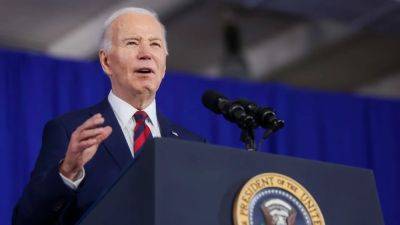America’s Office Fire Sale Has Barely Begun
If offices are in such hot water, where are all the forced sellers? Office-building owners have been under pressure since the Covid-19 pandemic hollowed out their buildings in early 2020. According to data from real-estate consulting firm Colliers, the U.S. vacancy rate has risen from 11% in late 2019 to 17% today, higher than at any point in the 2008 global financial crisis.
But forced sales are still surprisingly rare. In 2023, only 3.5% of all office deals in the U.S. involved a distressed seller, based on analysis by MSCI Real Assets.
The most recent numbers available show the share slipping to 2.7% in January. Distressed sales ramped up much faster in the GFC. A strong economy is helping to delay the day of reckoning, as most tenants are still paying the rent.
Pressure is building slowly as leases expire: Many companies are reducing their space by 30% to 40% when their contracts end. Lenders are also eager to kick the can down the road. They don’t want to force borrowers to sell buildings into a weak commercial real-estate market, which would lead to punishing losses.
This might explain why debt maturities aren’t triggering the kind of distress that some property watchers expected. Of the $35.8 billion of office loans that came due in the commercial mortgage-backed securities market last year, only a quarter were paid off in full, according to data from real-estate analytics firm CRED iQ. Other loans were extended or sent to a special servicer—a third party that tries to find the best outcome for the debt, which may include modified payment terms or foreclosure.
Read more on livemint.com






















